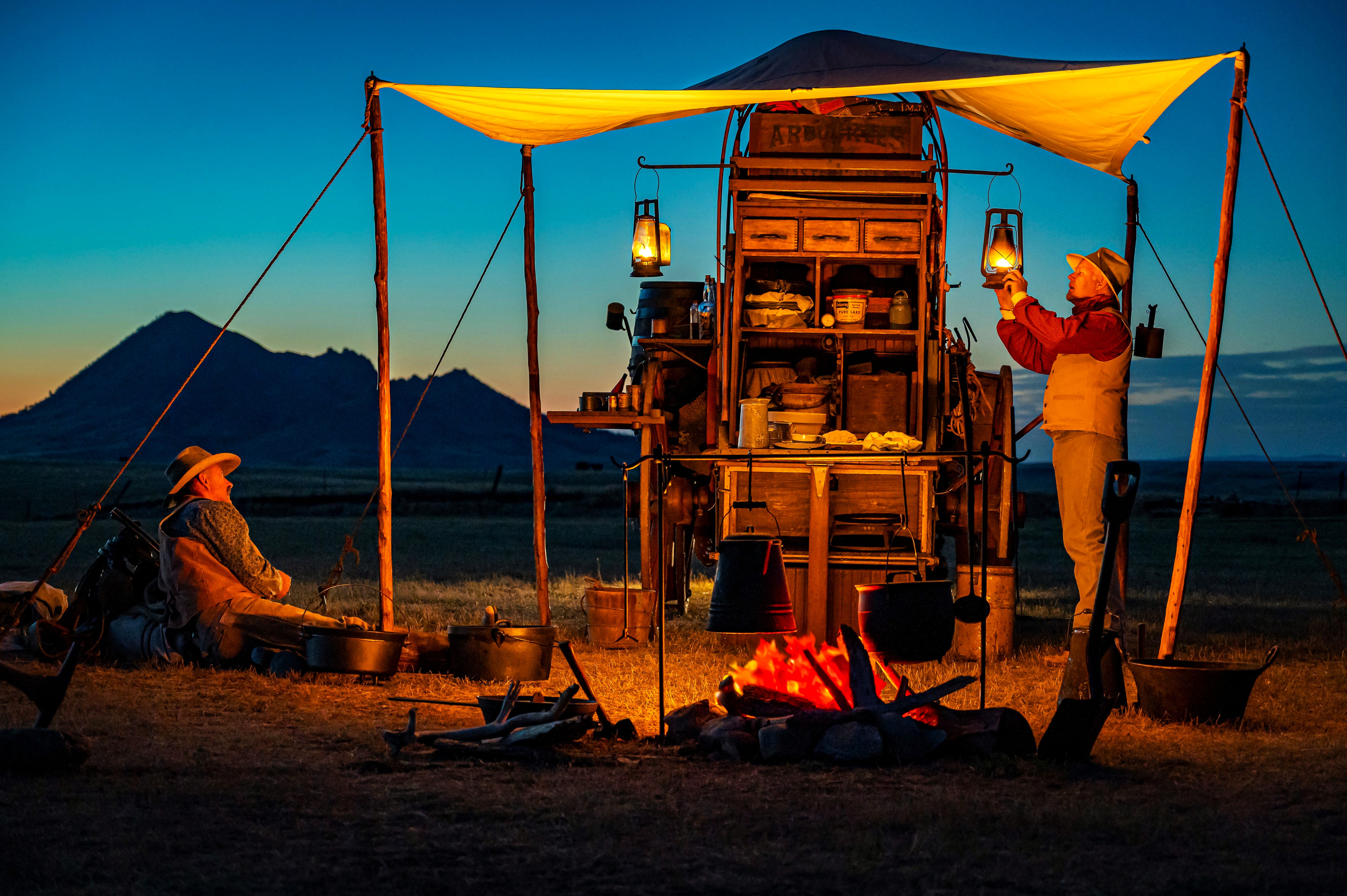Jim Patrick has spent a lifetime immersed in the western lifestyle. From ranch and livestock work to sheep shearing, taxidermy, and carpentry, his skillset is impressive but he's most at ease with the ways of a cowboy. Even so, as a young man going through college, he found himself chained - sitting behind a desk in an office. It was the polar opposite of all he loved, a claustrophobic job in an asphalt world. As he struggled with that predicament, he happened across a position advertised by Hansen Wheel & Wagon Shop in Letcher, South Dakota. They were looking for a woodworker. He decided to interview for the job and not only found a new career but a family of craftsmen and a whole new trajectory in life. He went home that day and told his wife that he was leaving his old job for a new one. When she asked what was going to do, he boldly proclaimed, "I'm gonna build wagons." She grew quiet, then gave him a look of disbelief. As he remembers it, she said something along the lines of, "Do people still do things like that?" He laughed as he re-lived that moment, clearly understanding how far-from-ordinary the answer had been.
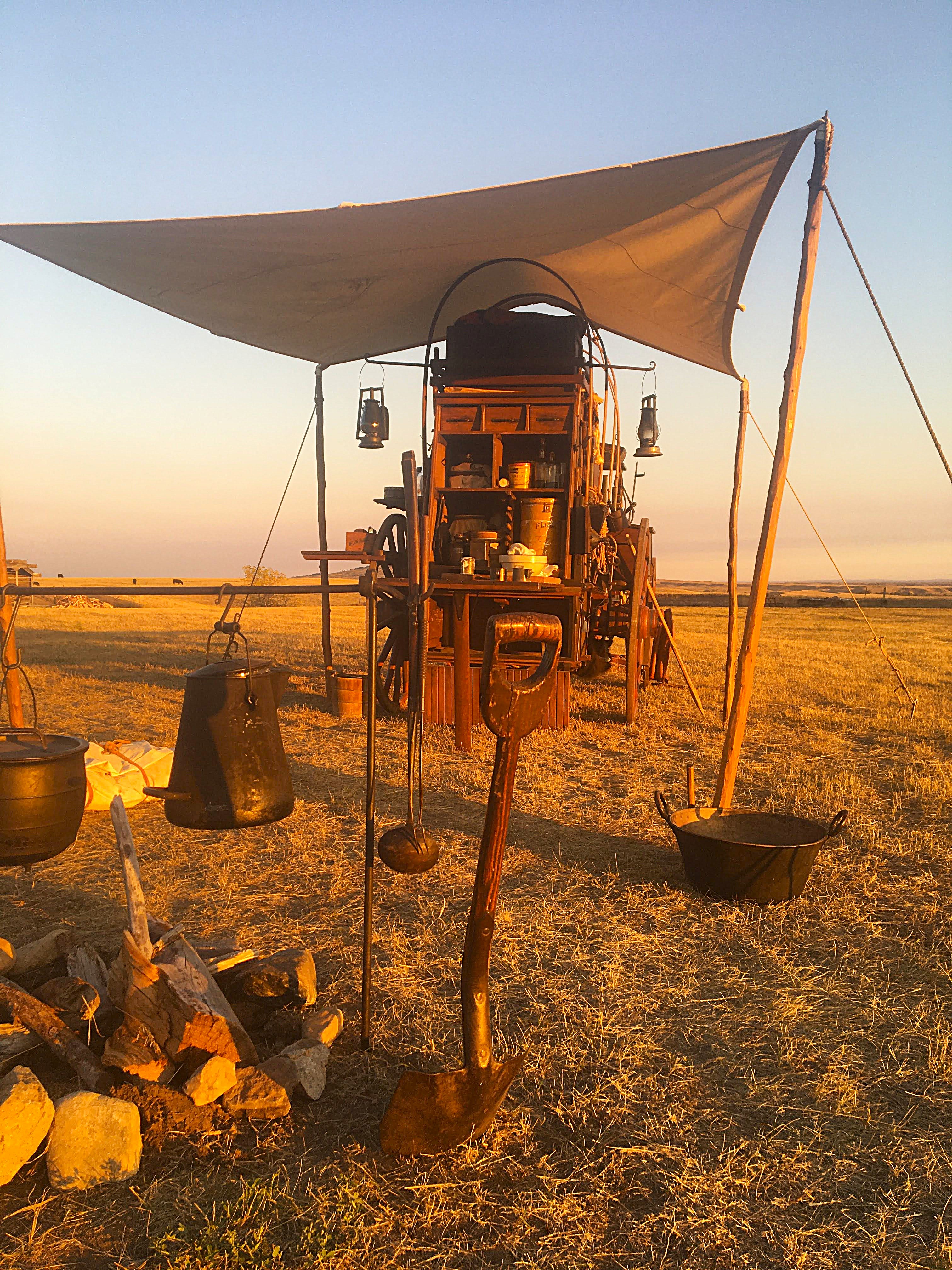
He instantly took to the new position. It turned out to be a defining season for him. The job filled a void and gave him renewed purpose. It also seemed to pull all his life experiences together. The entire transition was a reminder that, sometimes, the best paths in life can take a circuitous route, better preparing us for what is to come. For Jim, everything began to click and make more sense. Even the fine art degree he'd earned had greater meaning. From his background in wood and metalworking to painting and drawing, his drive to create was unleashed in ways he'd never imagined.
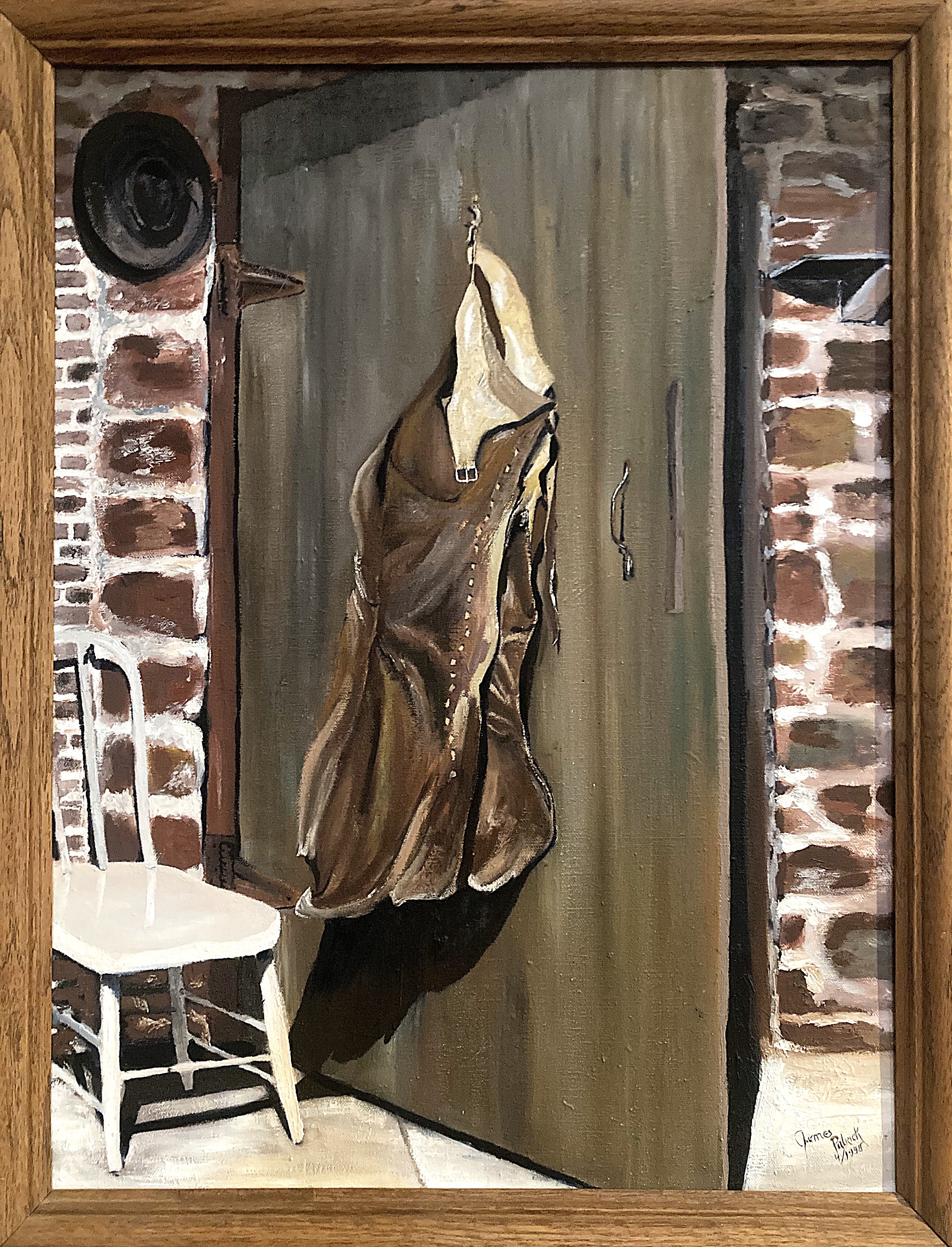
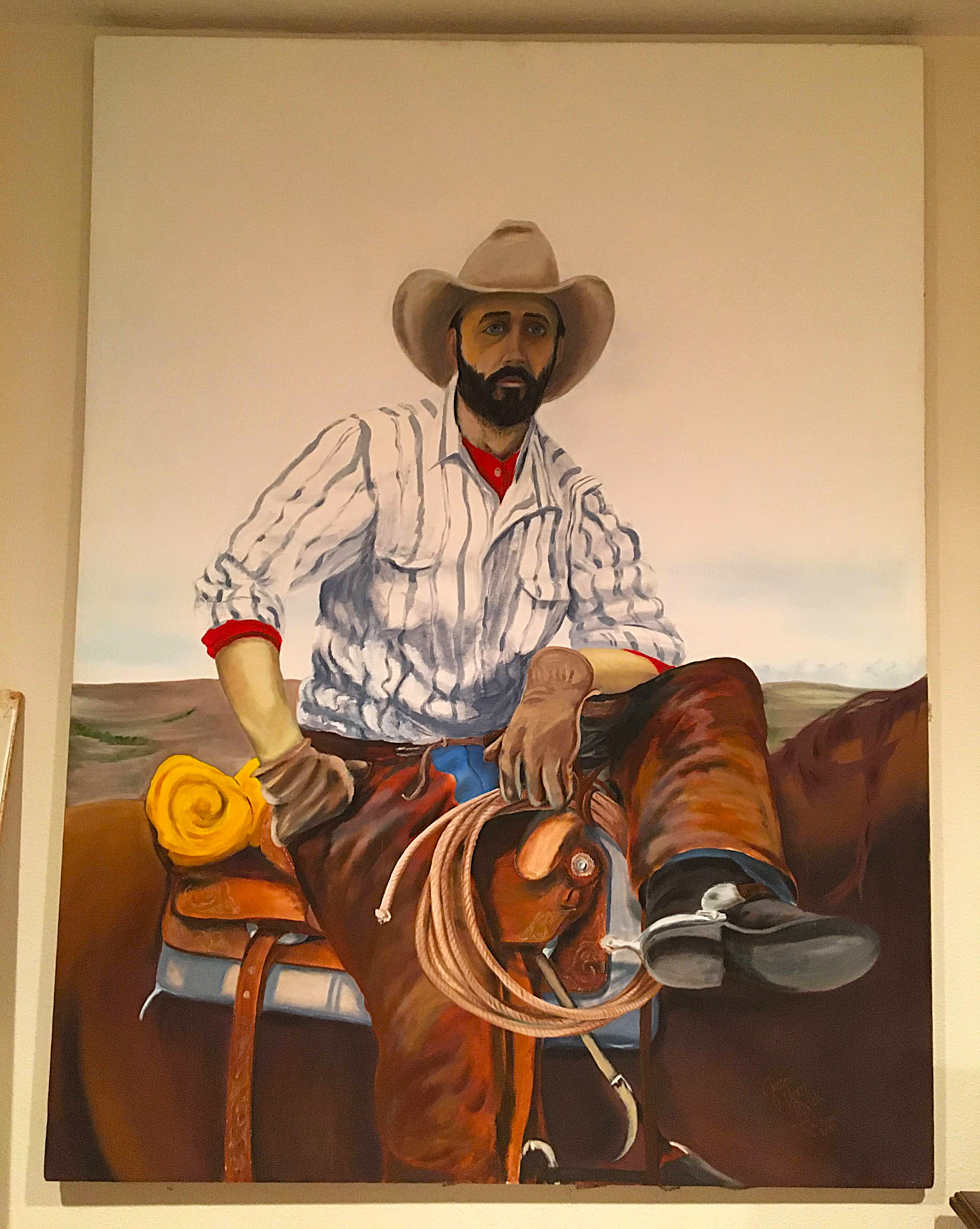
This self-portrait was part of an assignment when Jim was working on his fine art degree.
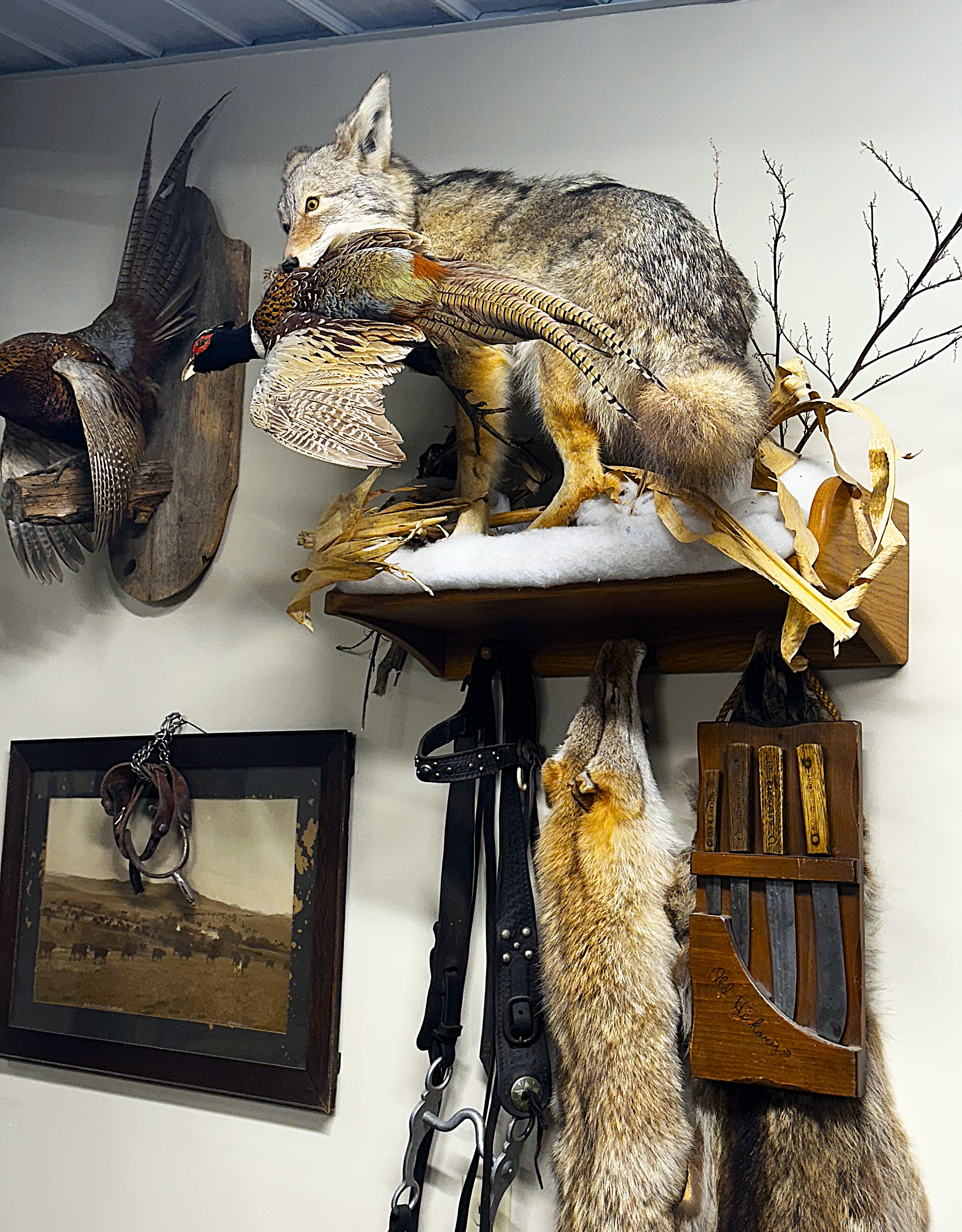
Paintings and taxidery by Jim Patrick.
During his years of work at Doug Hansen's shop, Jim not only fed his cowboy soul but had an opportunity to get close to an immense amount of horse-drawn heritage. Soaking up so much from so many different brands, he began to grow especially fond of the Peter Schuttler look and legacy. "Schuttler's work is dominated by style, craftmanship, and history," he said. "So, when it came time to build my own chuck wagon, I knew exactly what I wanted."
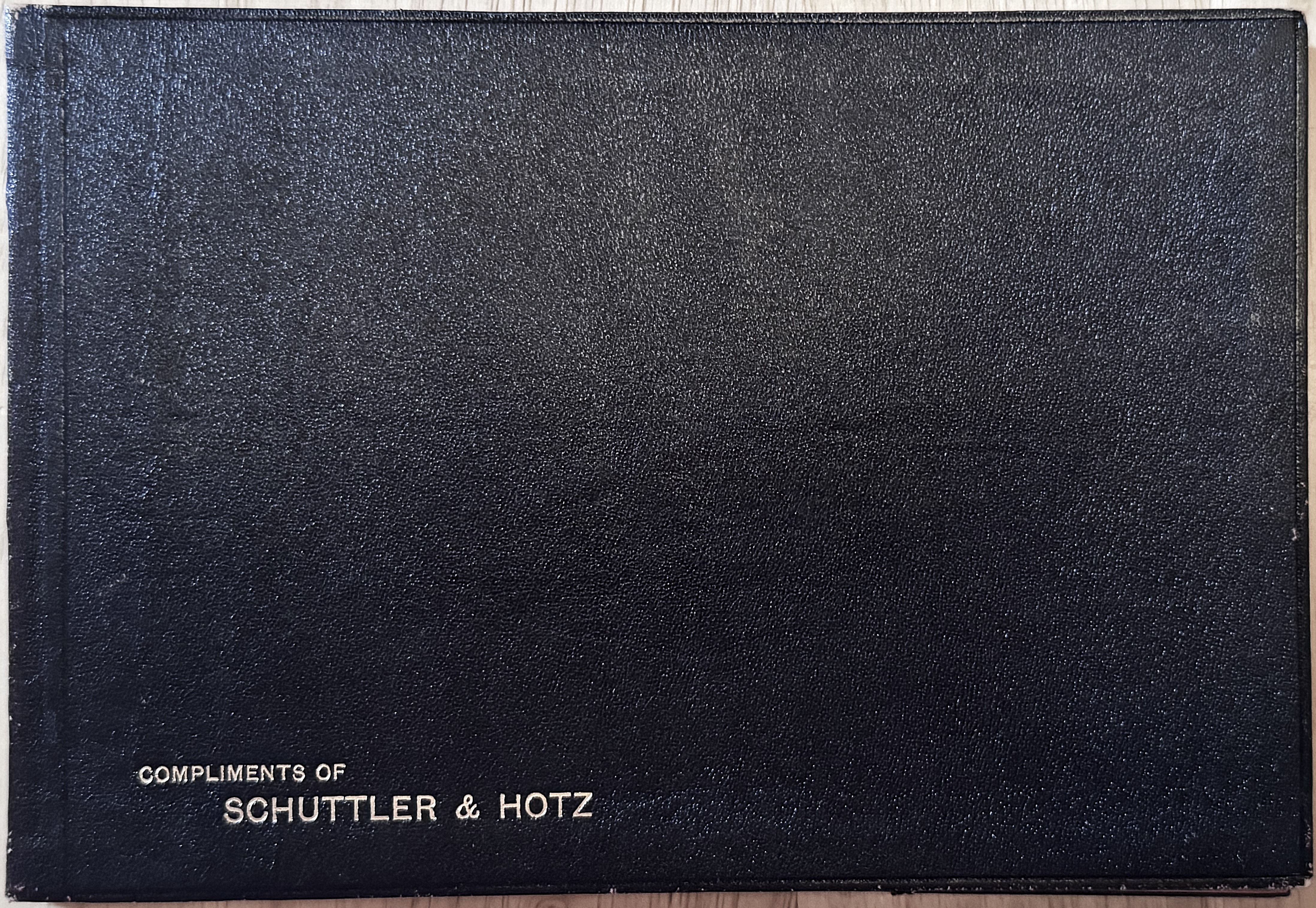
This Schuttler catalog will date to the late 1800s. While most major manufacturers produced catalogs and other sales literature, few had the financial resources to produce perfect-bound books with an embossed, leather-style cover such as this.
Jim is far from alone in his assessments. Schuttler's distinctions have been noted for the better part of two centuries. In fact, the company had grown to a point that it was already a powerhouse name even before America's Civil War. Wagons bearing the Peter Schuttler mark were legendary on the American frontier. Whether the brand was freighting goods across rivers, mountains, and plains, hauling raw ore and timber, carrying miners and emigrants west, taking part in lengthy cattle drives, sheepherding operations, or any number of chores related to farm needs, ranch work, or city hauling, Schuttler was a highly visible and coveted maker. As a result, the logo could be found on all kinds of vehicles, including some carriages, in the 1800s. By the turn of the twentieth century, most of the firm's production was focused on farm, freight, ranch, log, business, and other specialty vehicle needs. It's quite a history that I outlined in a three-part blog in February of this year.
The Schuttler western rack bed that we're featuring today has been immaculately rebuilt and restored by Jim Patrick. Sitting on a unique Schuttler running gear (undercarriage), this is a head-turning rig with impeccable attention to detail. So distinctive is the design that it and Jim's camp have been portrayed in paintings, calendars, and magazine covers.
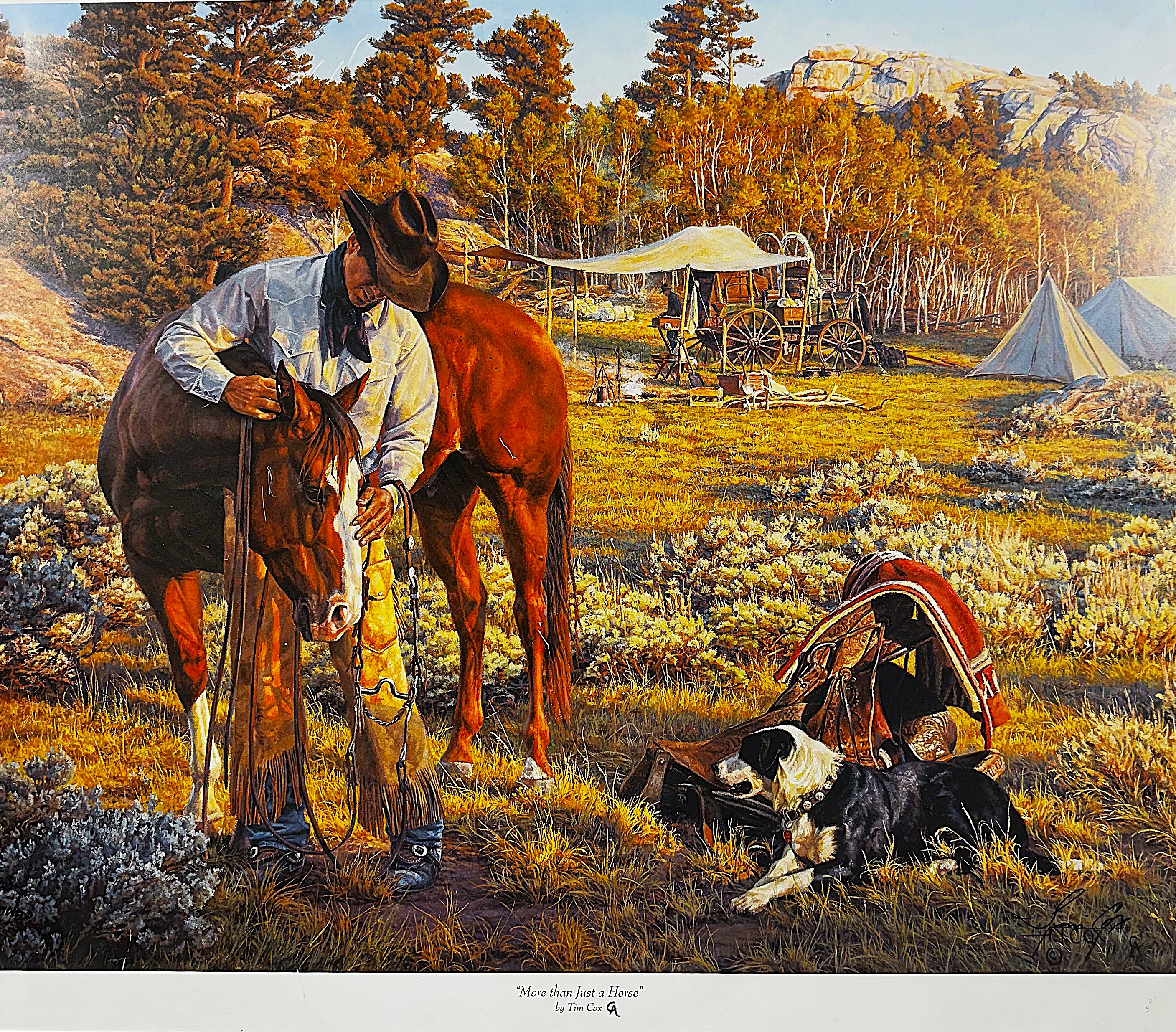
Just as intriguing are some of the specific details engineered into this machine. It has a wide track running gear (62 inches) with a narrow box (38 inches). That's an unusual combination but, believe it or not, it's a factory spec; just not one you see very often. In fact, when mentioned in their sales pieces, this particular gear was typically a footnote like this one, "Wide track gears with narrow bed may be had when so ordered." Most of the time, though, Schuttler's wide track gears were fitted to the broader (42 inch) boxes - which are almost as hard to find these days. The track width is typically connected to the type of terrain the vehicle was subjected to. In other words, uneven, sloping, steep, and ultra-rugged ground often demanded a wide track for a larger base and greater load stability. The bonus track size with its narrow box also allows for a tighter turning radius. These are just the kind of advantages that come in handy in remote, unimproved areas. Far from common, you might spot a true South Dakota Jackalope before you run across another one of these configurations. It's just one more reminder of the level of customization many makers were willing to engage for a customer. (For those interested, I wrote a blog on February 5, 2014 that covers the measurement of track widths - SEE our ARCHIVED blog section).
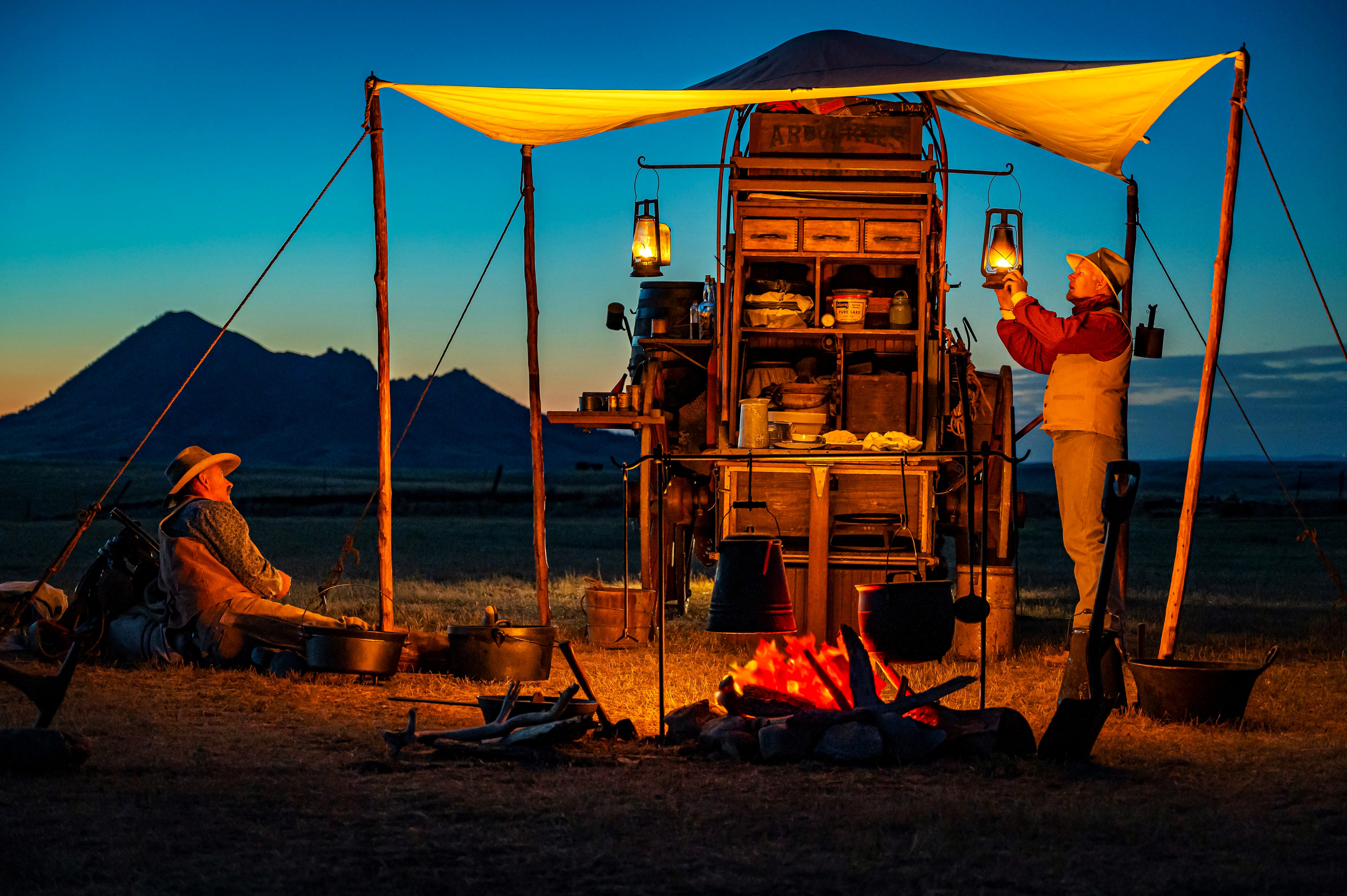
I asked Jim what his vision for the wagon and camp were when he began the restoration process. He said he wanted a vehicle that stood out from the crowd while remaining highly representative of the West. That's why he chose a rack bed design. Then, in the creation of the chuck box, boot, pantry, toolbox, jockey box, hardware, and other areas, he focused on three things. He wanted the entire setup to... look good, work good, and be simple. That statement sounds straightforward but blending simplicity and functionality can sometimes be a tall order. It requires a person to truly understand the vehicle, terrain, camp needs, hauling capabilities, efficiencies, open fire cooking, and logistics for every part of the plan. Ultimately, it means fully grasping the engineering aspects of the vehicle and history of the period. The entire process can take a while to master.
Taking specifications directly from Schuttler catalogs and surviving wagons, Jim's rack bed began to take shape. Using original hardware everywhere possible, he personally forged other metalwork such as hinges and the drag shoe chain. Up front, he positioned the jockey box so items can be retrieved whether a person is in or out of the wagon. The stakes on the box work extremely well to help hold and secure the grouping of fly poles. Running under the wagon bed, a belly box holds additional ironwork for the campfire. Another toolbox centers the right side of the wagon, nesting above a pull-out drawer for smaller items. Detail after detail, efficiency rules this personalized piece.
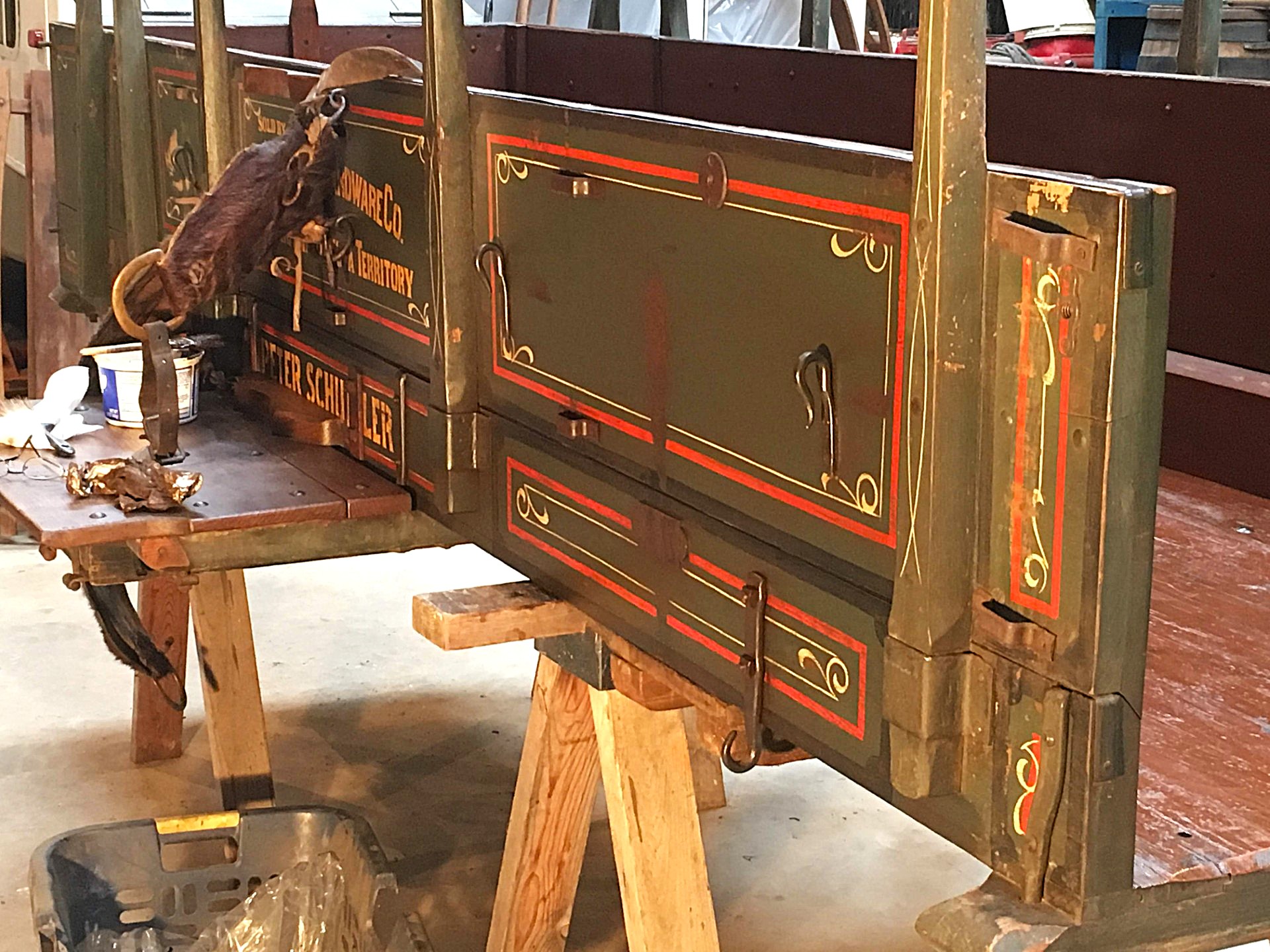
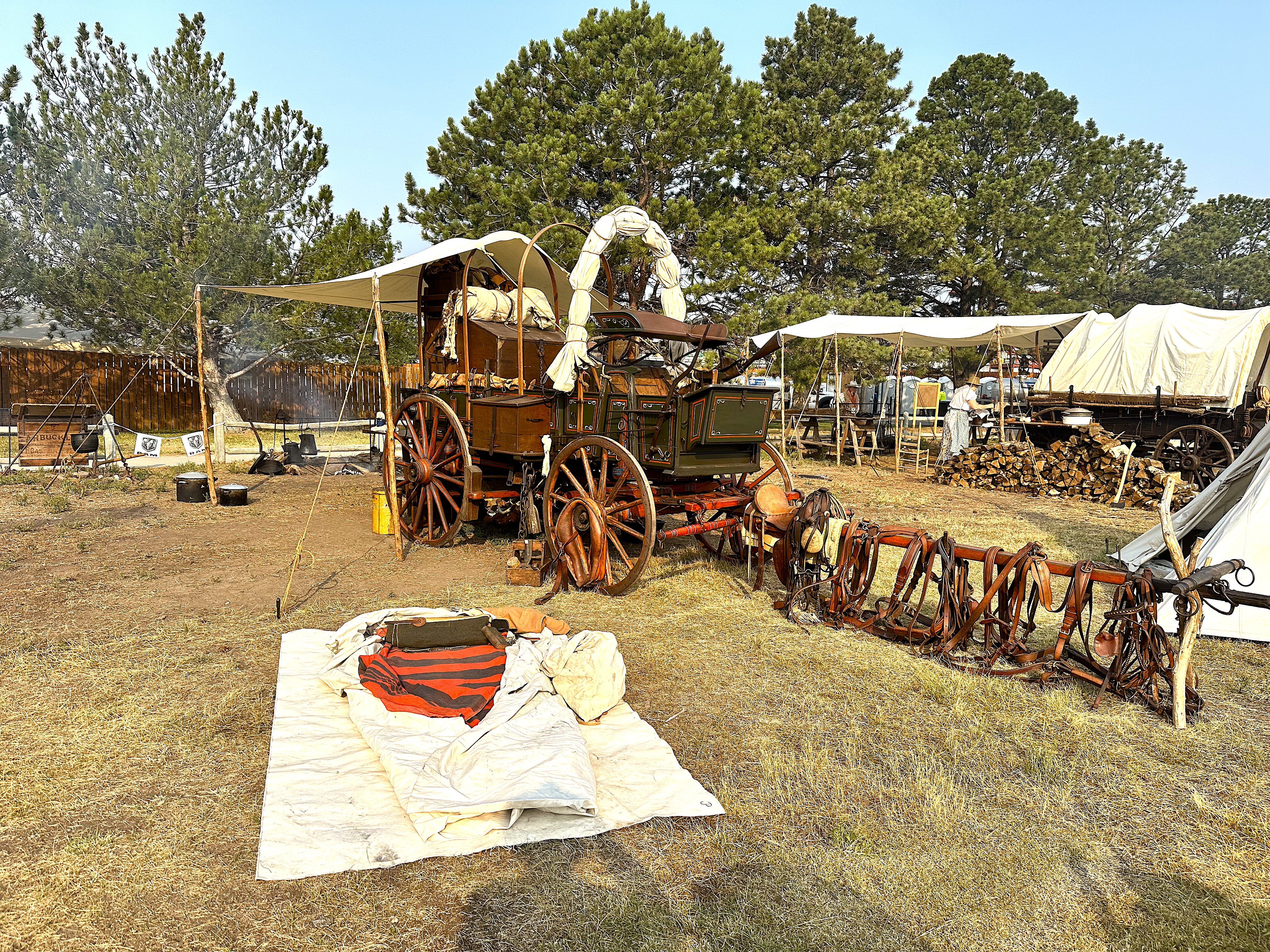
Jim's Schuttler at a cookoff competition. Images above courtesy of Jim Patrick.
You'll see the same simplicity and well-thought-out nature of the chuck box. Jim was so methodical that he even used one of the dividers as a knife block! Talk about maximizing the use of space. Box joints with forged handles define the drawers and the pan boot is attached with eye bolts, reducing heavier, unnecessary ironwork.
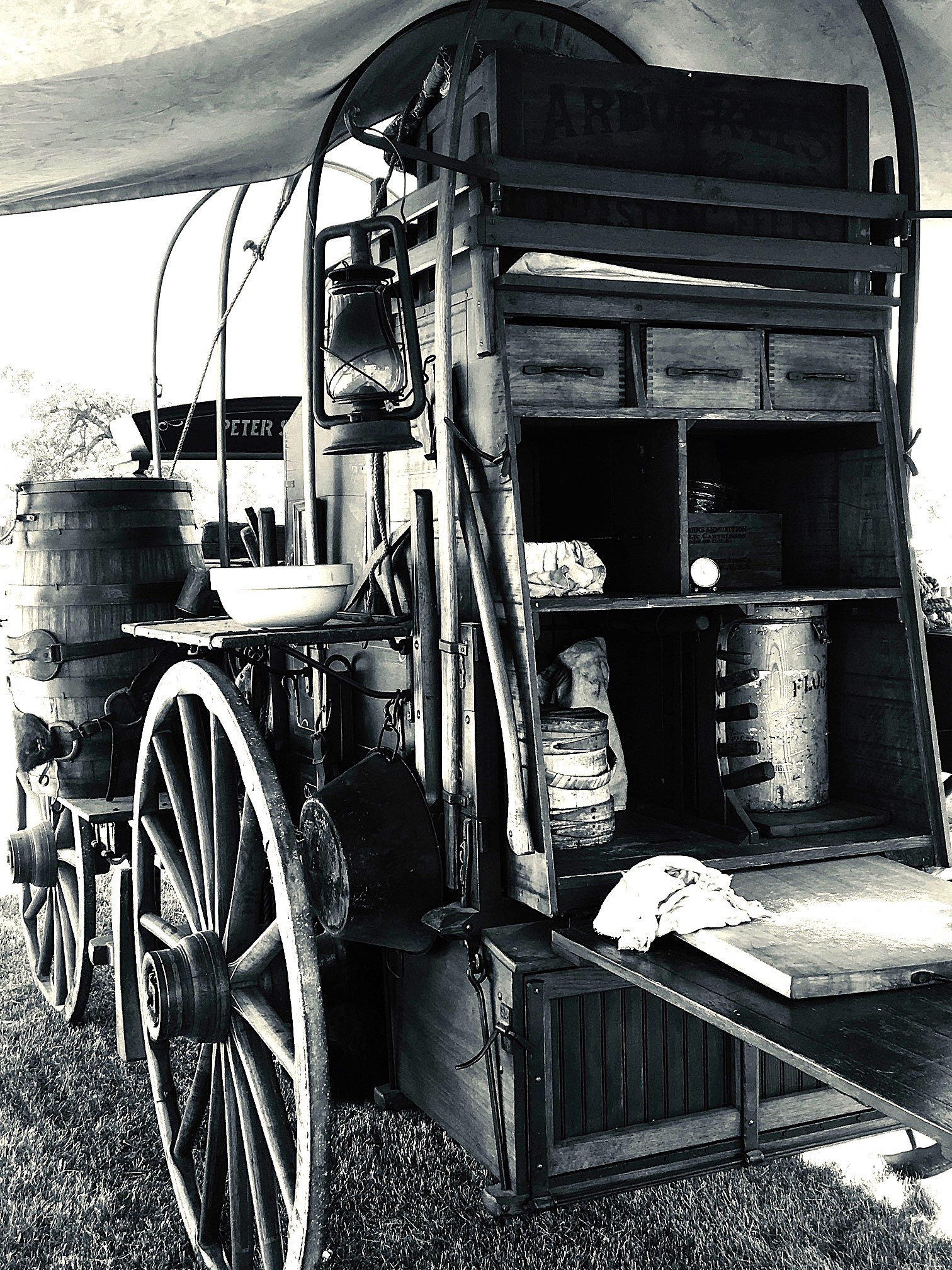
Image courtesy of Jim Patrick
The Trail Pup (2-wheeled cart pulled behind the wagon) is one that Jim built from available parts, much the way that period pieces would have been done. He wanted it to be light but strong, able to carry extra items that could be quickly retrieved.

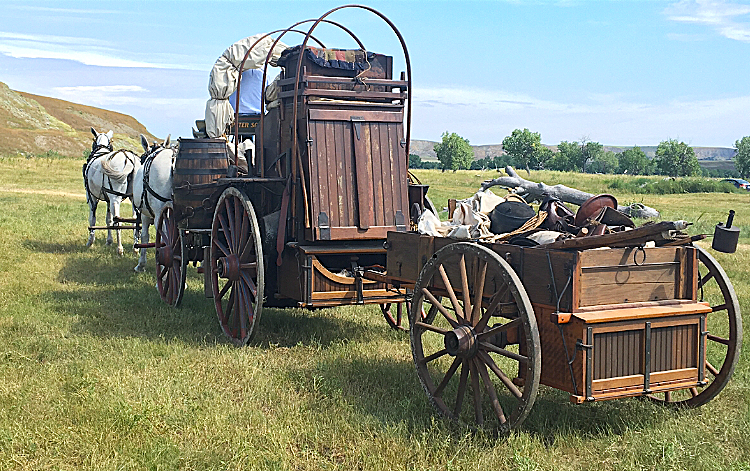
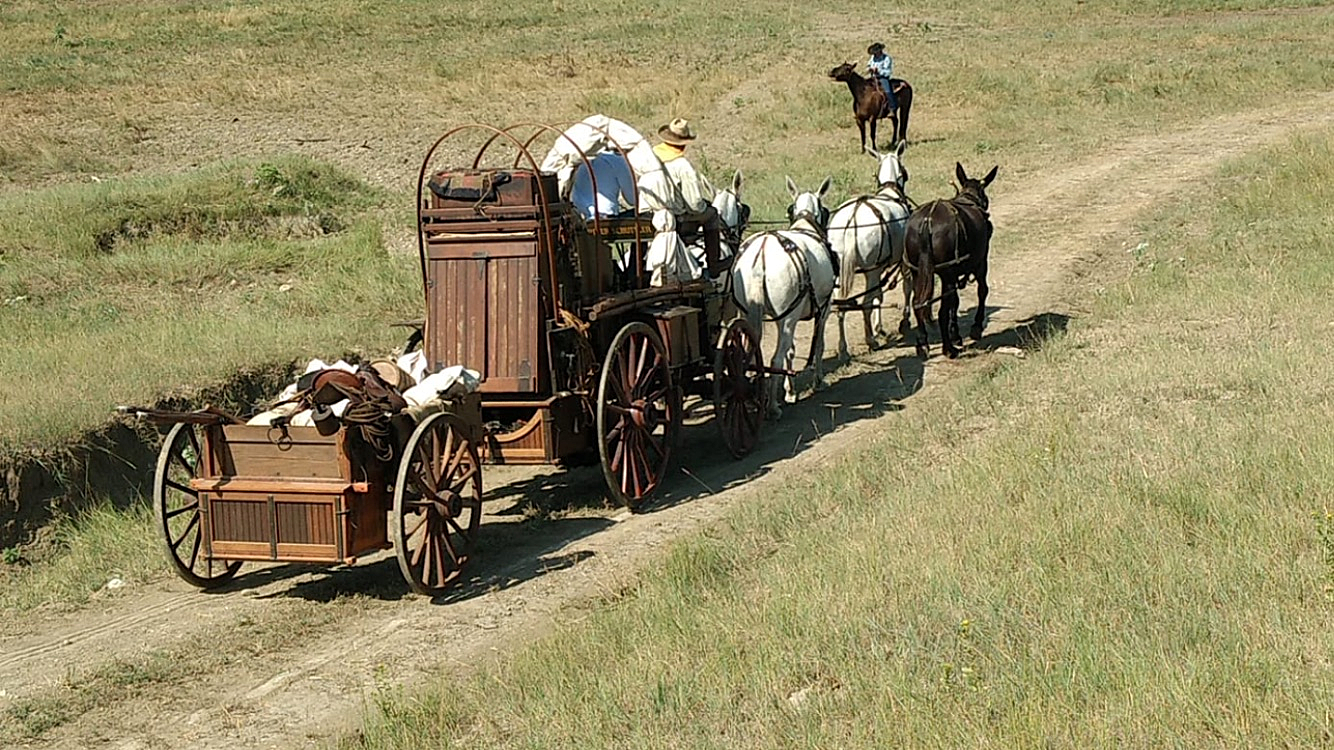
As a vehicle category, Rack beds were made by many of America's major wagon builders but were typically associated with rigs crafted for the western trade. As a result, it's not a design that was seen too often in other regions. The bed itself has removeable sideboards, basically allowing the wagon to convert to a flat bed with low sides. It also has extended side stakes, a jockey box, seat risers, and plenty of reinforced metalwork as well as a heavier brake system. Clearly, these were not Sunday-go-to-meeting rides nor were they a typical farm wagon. The designs were true workhorses. Powerfully engineered, they were built to deliver-the-goods day in and day out, wherever they were being used. Their strong, versatile makeup was an ideal match for the unpredictability of trail and ranch work.
Over the past twenty years, Jim and his wife, Susan, have cooked with the wagon in a wide range of historic locales from South Dakota, Minnesota, Iowa, Wisconsin, and Texas to Colorado, New Mexico, Wyoming, and Oklahoma. They call it the 'DT' wagon. It's an acronym for Dakota Territory.
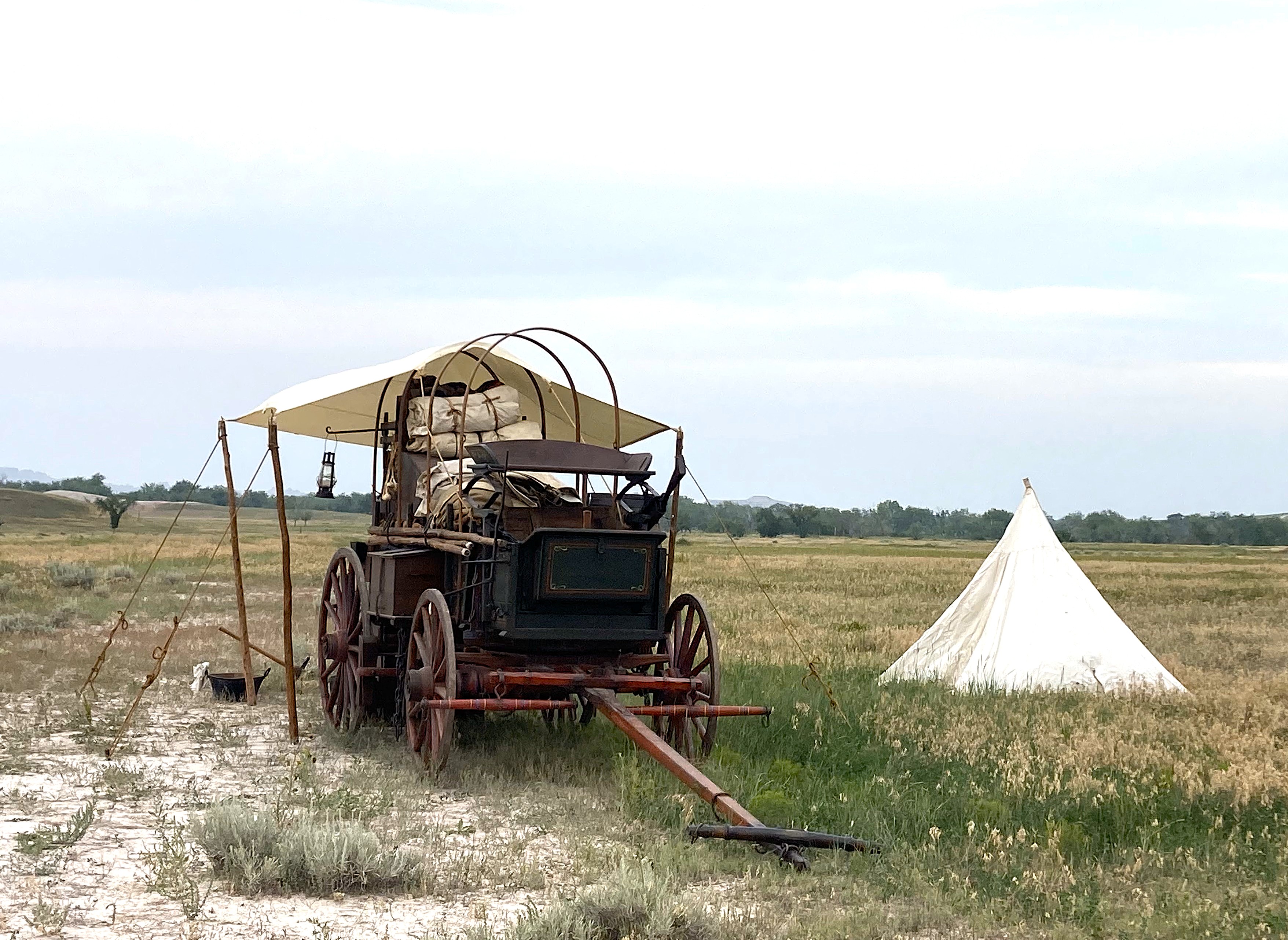
In 2008, he hooked up his team to the Schuttler and over a period of 17 days, he drove the wagon close to 250 miles on the old Ft. Pierre to Deadwood Trail. The trip was part of a commemoration of that part of our past. It was one more way that Jim cemented his relationship with his rolling work of art, watching it conquer the rigorous demands of the trip. It also gave him a connection to the lifestyle that he feels is helpful in competitions and in sharing with others.
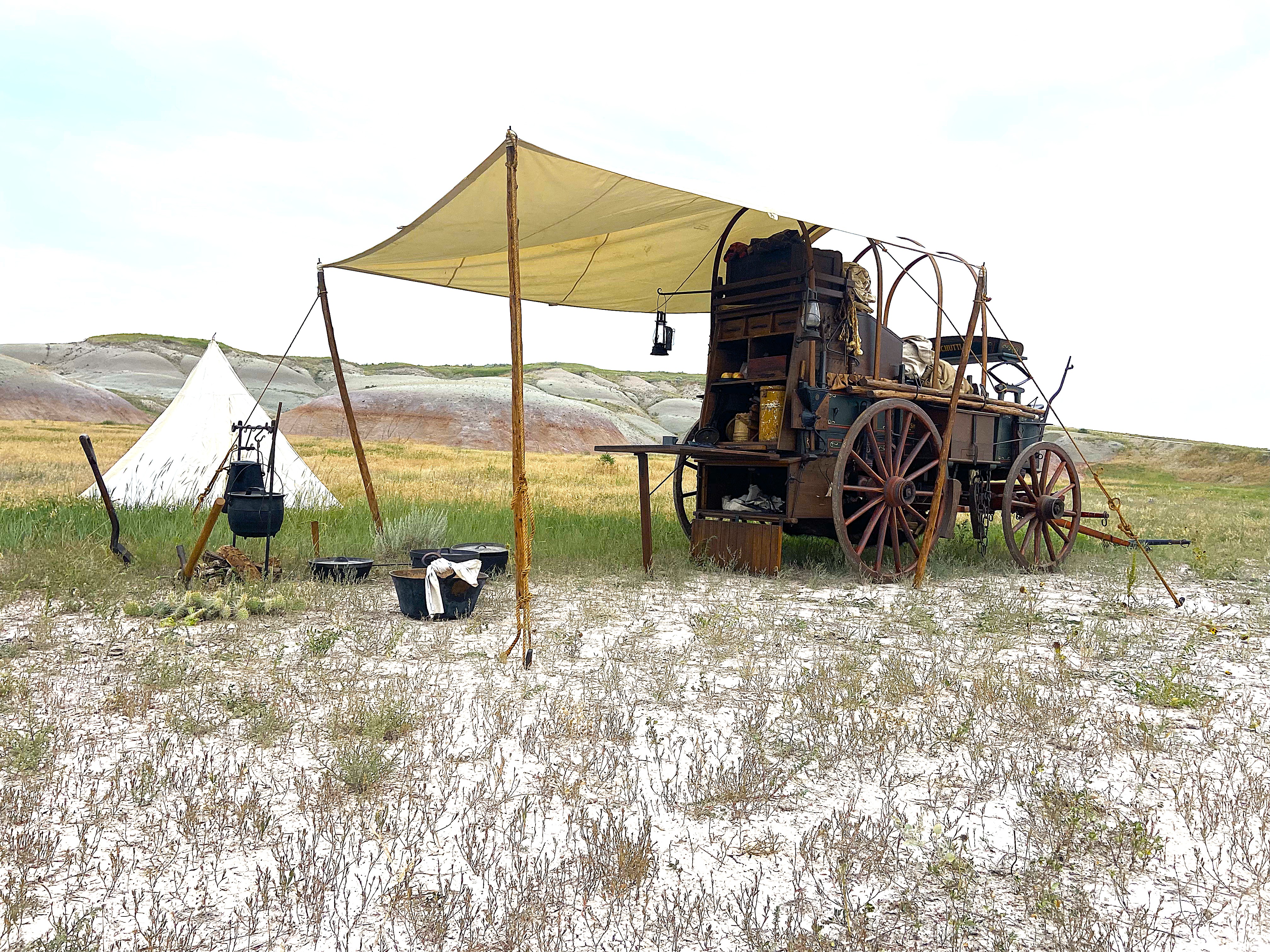
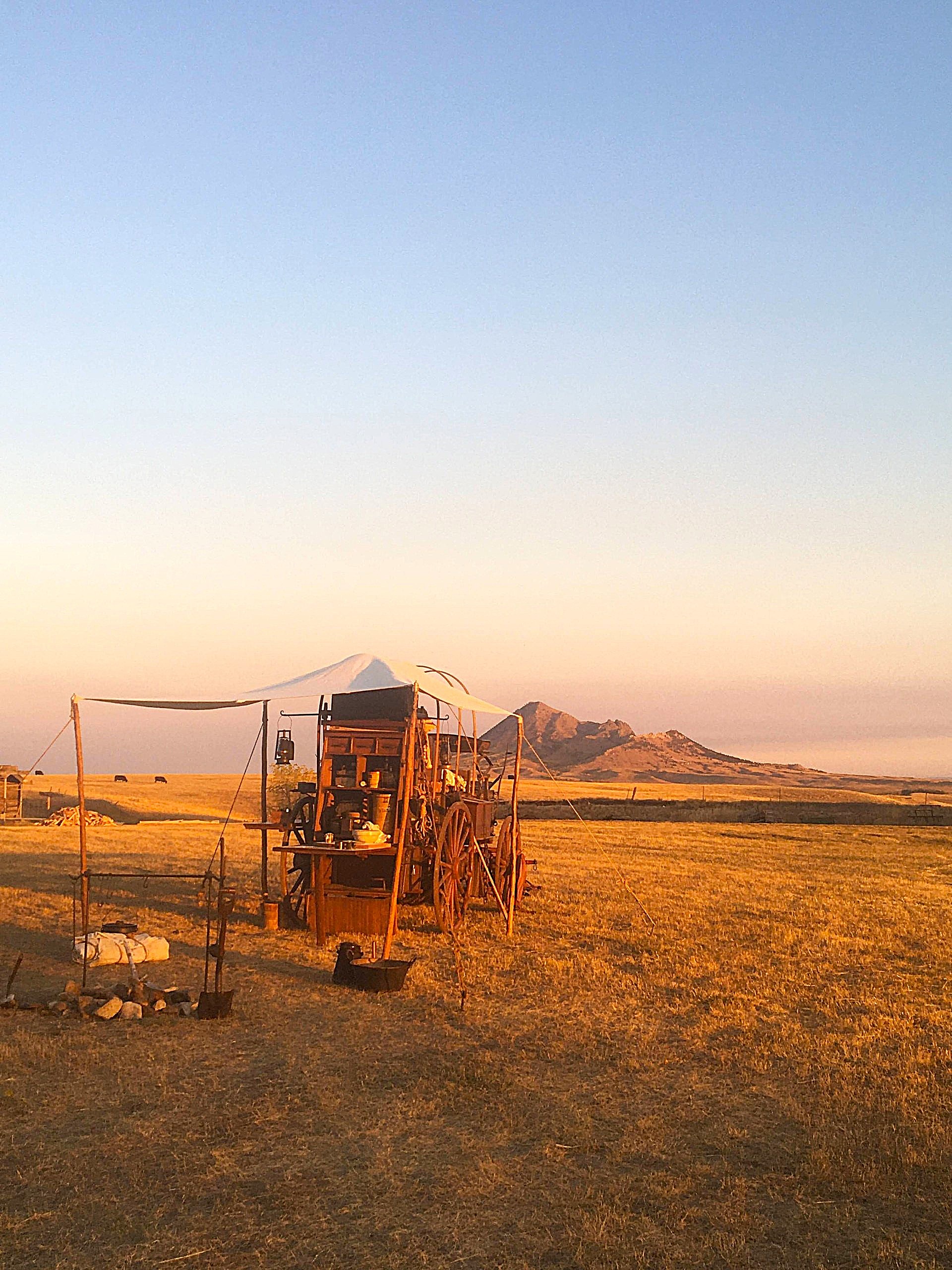
To that point, one other thing that really stood out to me about Jim's wagon and camp is the professional signage that helps others more fully appreciate the chuck wagon era as well as the brand of his wagon. These are the kind of special touches that encourage others to share in the celebration and get more involved. The truth is, the more folks know, the more apt they are to participate in this portion of our past. It's also the kind of personal history (provenance) that continually builds equity in these survivors.
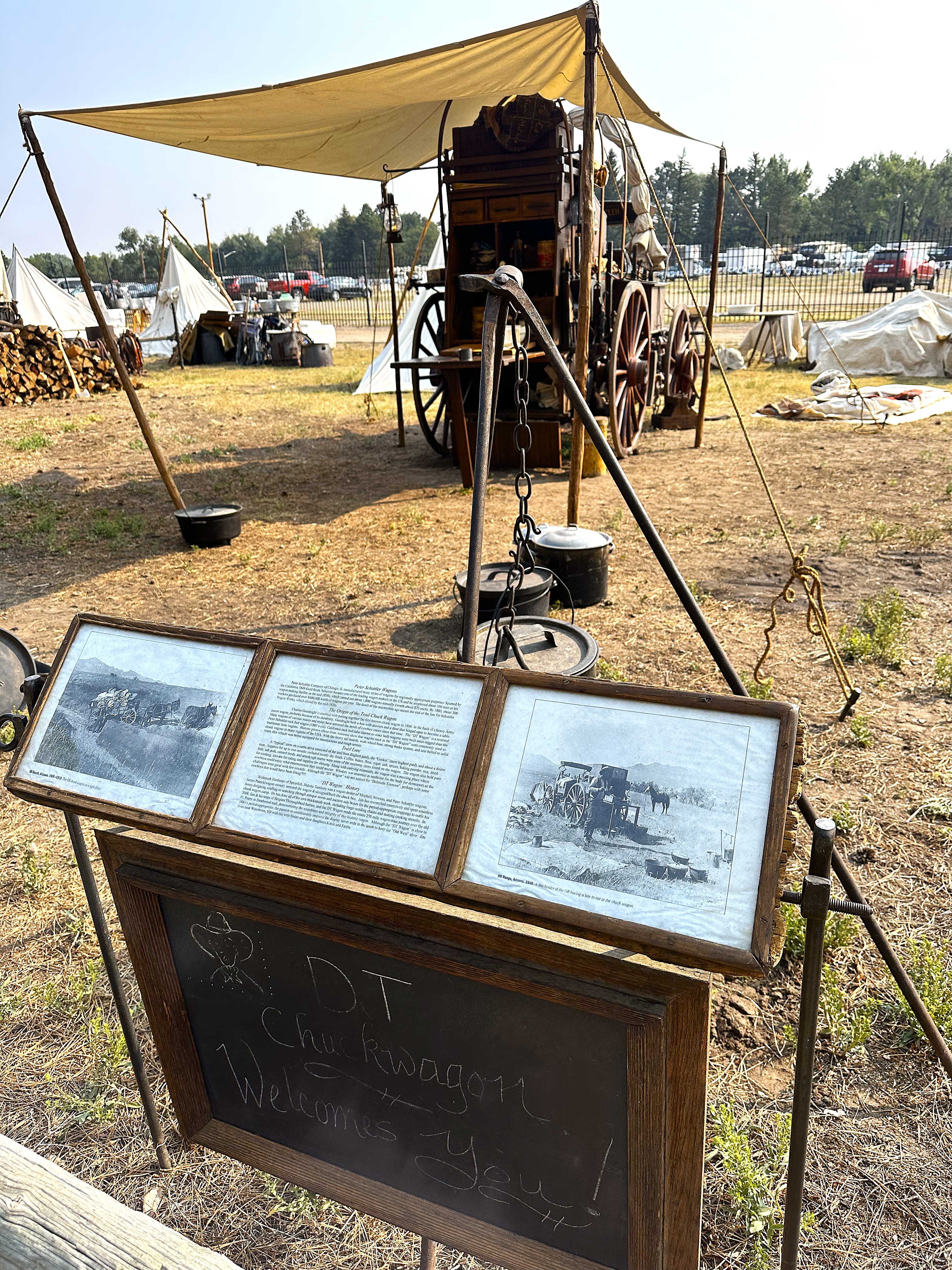
As a way to greet and share information with visitors, Jim painted a portion of an antique crate with chalkboard paint. The flip side is a familiar sight to most chuck wagon enthusiasts. See image immediately below.
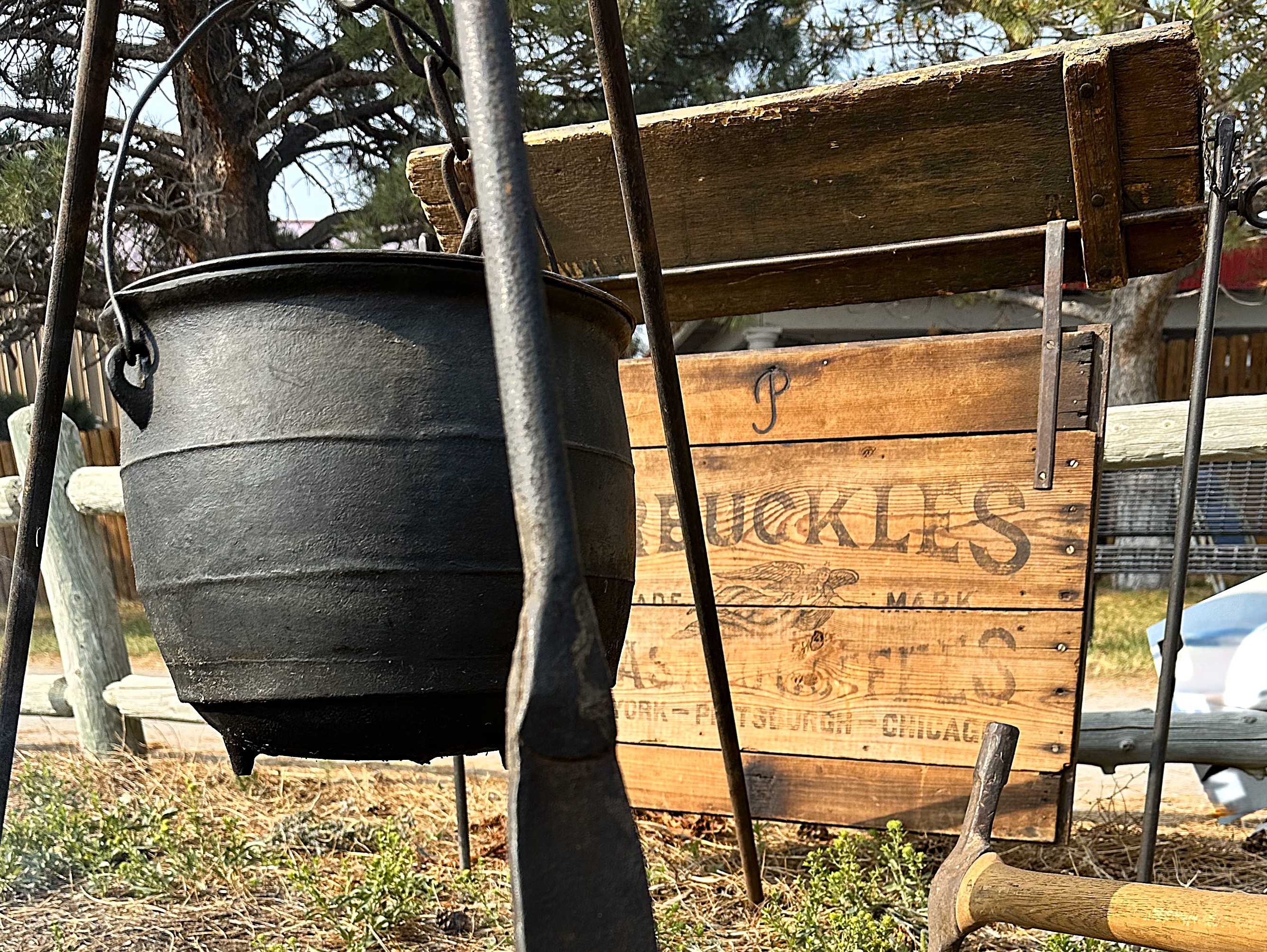
Special thanks to Jim Patrick, Doug Hansen, and Chad Coppess Photography for providing the wagon images for this story. We appreciate the opportunity to share more details on Another Western Legend.
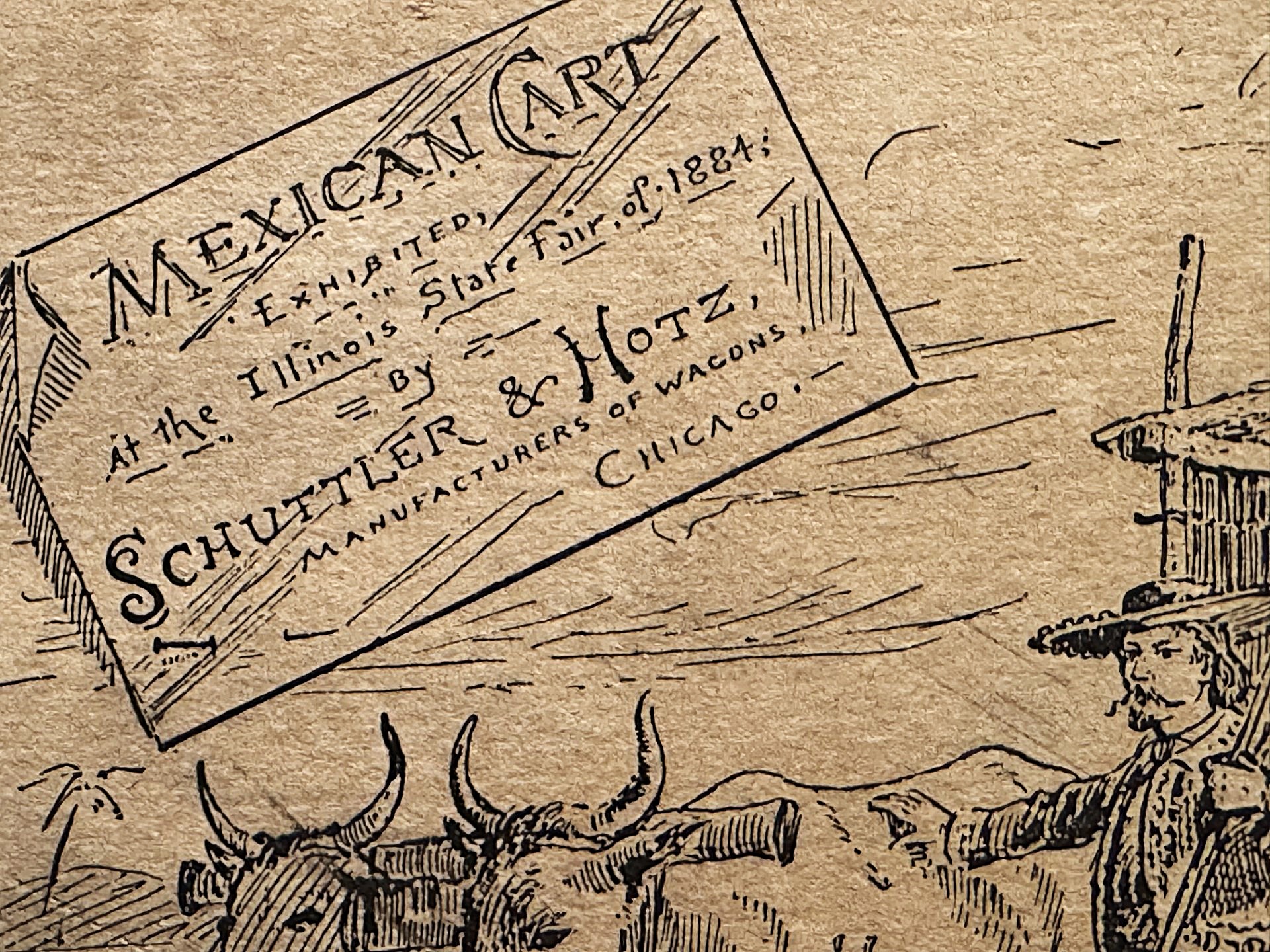
BE AMONG THE FIRST to know when we've updated our blogs, articles, products, and other sections. Some things can be time-sensitive so it's good to be in the loop. To help ensure you're up-to-speed with our postings, just click on the SIGN UP banner at the top right of our website and leave your email address. It's quick and easy.
Editor's Note... As of this writing, Jim Patrick has been a wainwright for thirty years. He's a past Director of the American Chuck Wagon Association and, currently, is on the ACWA Historical Committee. His wood & blacksmith shops are in the Watertown, South Dakota area. All chuck wagon images courtesy of Jim Patrick, Doug Hansen, and Chad Coppess Photography. Special thanks to Tim Cox for the review of the painting "More Than Just A Horse."
Ps. 20:7
